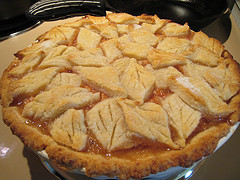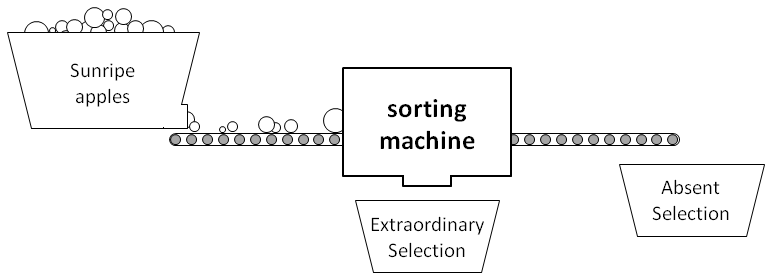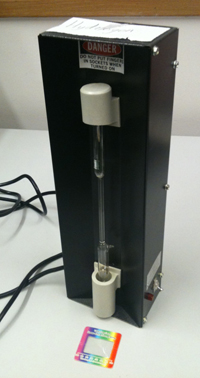Most introductory, general-education astronomy courses that cover stars and galaxies include a section on spectroscopy. After all, light is all we receive from the stars (excluding our own Sun, of course). If we want to learn about how stars work and how they evolve, we’d better be extract as much information as possible from that light.
Typically, these “Astro 101” instructors talk about the Bohr model of the atom, how light is absorbed and emitted via electrons jumping between orbits, and how the particular energy differences between orbits, “fingerprints” or “barcodes” for each atom, appear in the absorption spectra of stars. And in places lucky enough to have a lab associated with the class, the students get a chance to observe spectra and then “decode” the spectra of a star or two.
The materials here are written for a 50-minute activity. That’s too short to do any heavy-duty analysis of intensity vs wavelength graphs. Instead, we work with the visual (but not very quantitative) spectra like these from the 2004 April 18 Astronomy Picture of the Day:

Spectra of some stars. The pattern of dark lines encode the chemical composition of the stars' atmospheres. (Credit NOAO)
On the other hand, it doesn’t take 50 minutes to look at a few gas discharge tubes, draw the pattern of emission lines, and then compare them to a “mystery star”. That’s kind of fun – everybody likes looking at rainbows – but there’s not much discovery or learning taking place. Certainly not enough to address our learning goals for the activity:
By the end of this activity, and the corresponding lectures, you [the student] will be able to
- distinguish between continuous, emission and absorption spectra by their appearance and by how they form
- determine the chemical composition of a glowing gas by comparing its absorption spectrum to a catalogue of emission spectra
To really attack concept of how spectroscopy works, our activity starts with an (if I may say so and I can because I made it up so there) ingenious analogy to spectroscopy, one that students are already familiar enough with they can concentrate on the process, not the content + process. We start the activity with the teaching assistants (TAs) challenging them with this task:

Mmm, apple pie... (Image by justpeace on flickr CC)
In the Fall, apple orchards sell their apples to the Sunripe Company. One of Sunripe’s products, Extraordinary Selection© apple pie, is made only from certain apples: those with diameters between 60-65 mm and 80-85 mm.
Your job is to design the sorting machine that selects the Extraordinary Selection© apples out of all the apples processed in the factory. Sketch your design on the whiteboard and be prepared to share your design.

Students are tasked to design the sorting machine which selects only apples with certain sizes. (Diagram: Peter Newbury CC)
After designing the machine, talking about what apples you find in the Emission Spectrum, er, Extraordinary Selection bin and how the apples missing from the Absorpti-, er, Absent Selection bin tell you what the factory made that day (if you have their book of recipes) , the students finally get a chance to see the light (sorry, couldn’t resist.)
Equipment and Materials

Power supply, gas discharge tube and diffraction grating slide. (Image: Peter Newbury)
- Gas discharge power supplies. We get ours from Arbor Scientific.
- gas tubes. We use hydrogen, helium, neon, mercury, also from Arbor Scientific.
- diffraction grating slides. We use 1000 lines/mm slides from Rainbow Symphony.
- Student worksheets DecodingStarlight.tex DecodingStarlight.pdf The worksheet calls for these PS graphics via \includegraphics{}
- SolarSpectrum_NOAO.ps
- AppleSorter.ps
- Spectrum_WikimediaCommons.ps
Spectrum_WikimediaCommons.png - StellarSpectraFormation.ps
- The apple sorter graphic and stellar spectra formation graphic were created in this Powerpoint file DecodingStarlightGraphics.pptx
Instructor’s Guide
At UBC, this activity and others like it are presented by teaching assistants (TAs). We chose to take advantage of that opportunity to help teach the TAs about teaching astronomy. The instructor’s guide is, therefore, not a recipe or script for facilitating the activity. (We know how ineffective “recipe physics labs” can be — why expect TAs to learn from a recipe instructor’s guide?) Instead, there is a lot of discussion about why certain events occur and how to best (better, at least) facilitate those events.
- TAguideDecodingStarlight.tex TAguideDecodingStarlight.pdf
- some graphics included in the guide
Credit
Unless credit is given explicitly, all documents, graphics and images are licensed under a  Creative Commons Attribution-NonCommercial-ShareAlike 3.0 Unported License. This work is supported by the Carl Wieman Science Education Initiative.
Creative Commons Attribution-NonCommercial-ShareAlike 3.0 Unported License. This work is supported by the Carl Wieman Science Education Initiative.
Your feedback, comments, suggestions
If you use the materials here and find a alternate approach, tweak or extension, please share it by leaving a comment. Thanks!
